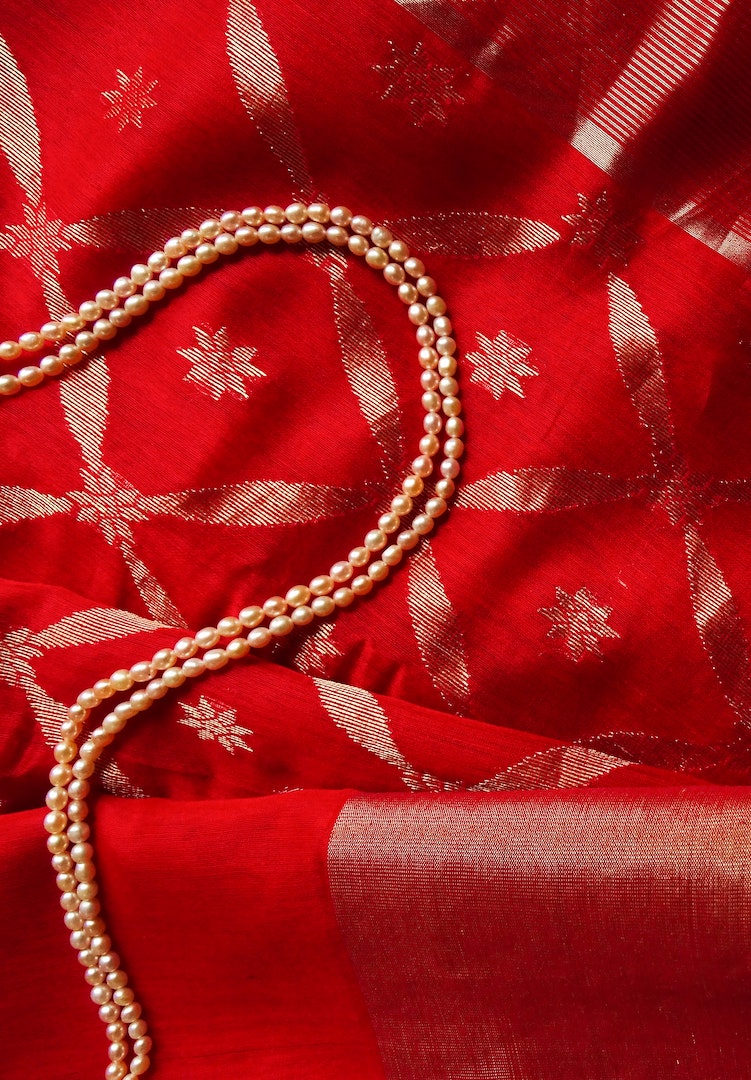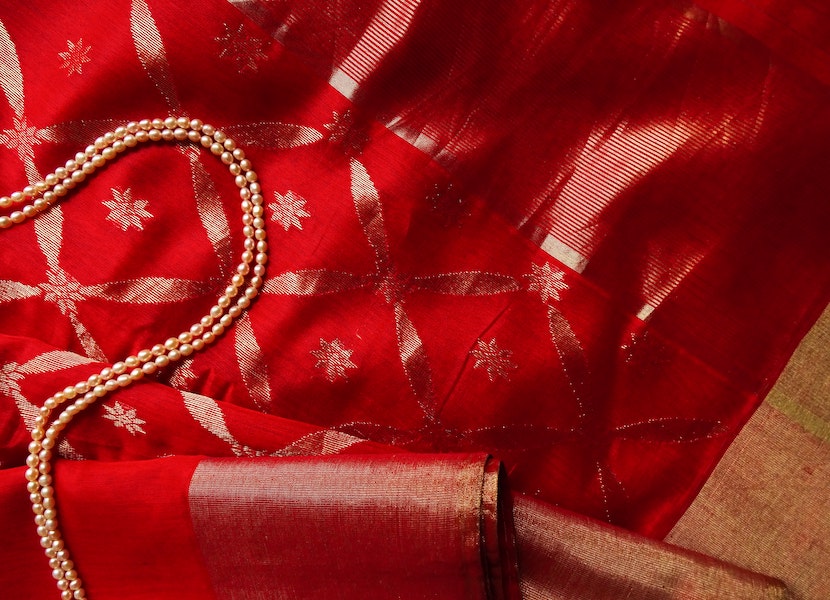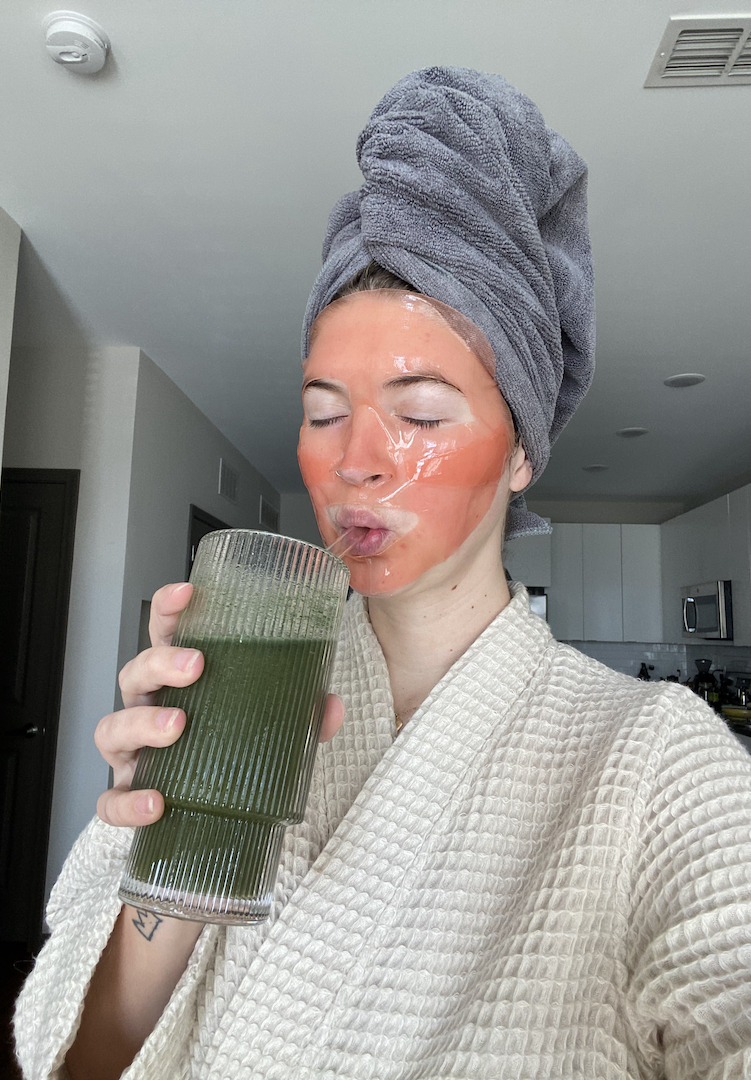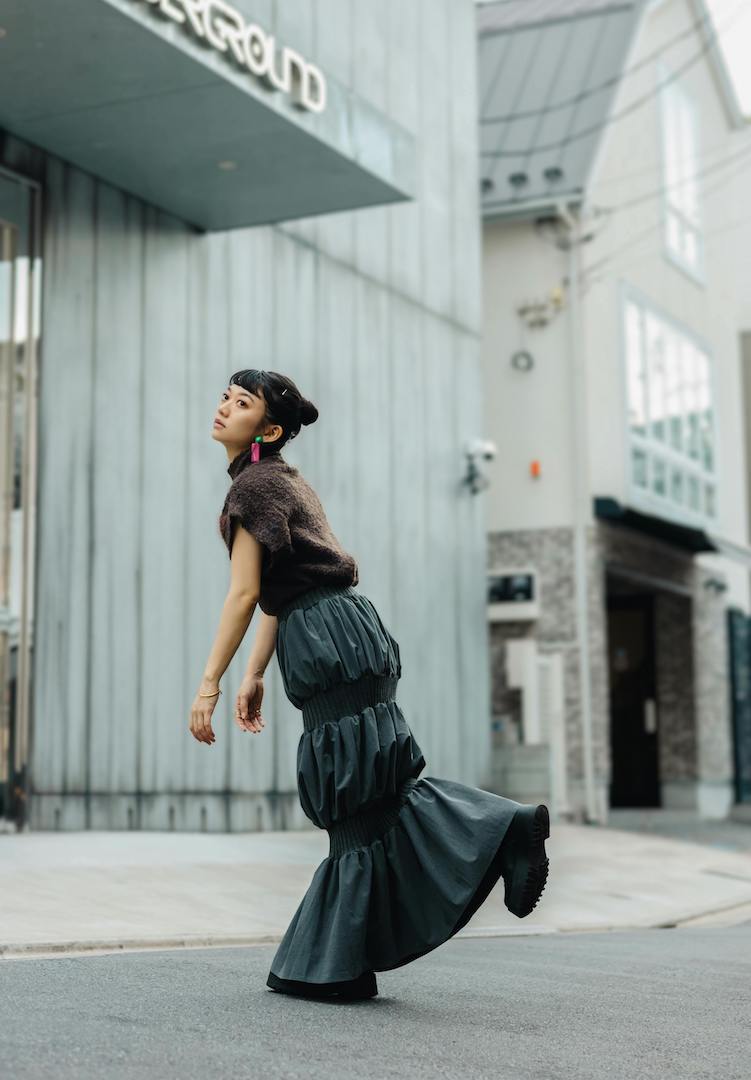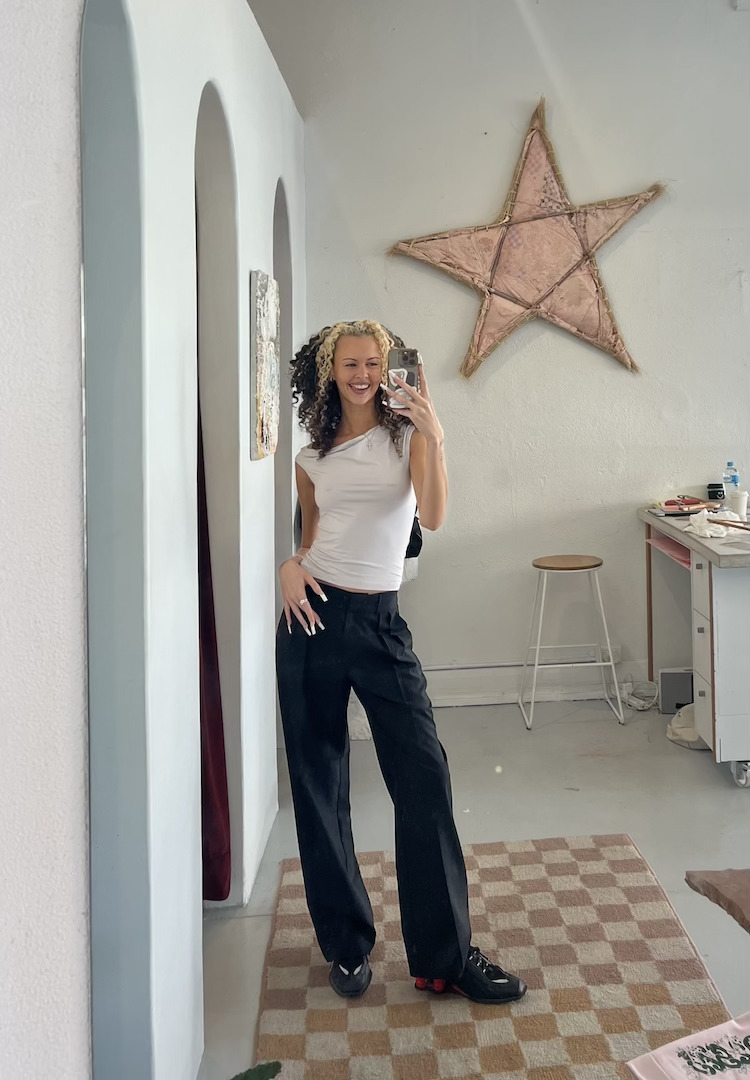How wearing my mother’s saree helped me reclaim my Indian identity
WORDS BY RIA PANDEY
“I stared at myself in the bathroom mirror. I looked foreign and familiar to myself at the same time, a mixture of aesthetics I couldn’t categorise or digest.”
People often say that clothing is one of the strongest, most obvious forms of self-expression. Choosing the way you present yourself to the world gives you the power to decide who you want to be and helps cultivate your sense of identity.
As a child, I was raised with a deep love and respect for my heritage, my culture and its clothing. I have vivid memories of my father dragging a suitcase down from the dusty corners of my garage and wheeling it into our living room, where my mother would wait – at my stubborn insistence, of course – before allowing me to indulge in the treasures locked inside.
Looking for other nourishing reads? Head to our Life section.
The sea of glittering silk sarees (whose traditional embroidery I later found out was named zardozi, aari and gota patti) would welcome me with open arms. My mother taught me how to drape my tiny body in the yards of fabric and told me fascinating stories of their travels from the corners of Northern India.
In South Asian culture, sarees are one of the most long-standing, traditional forms of dress. Having been traced back in history as far as the Indus Valley civilisation in 2600 BCE, sarees hold immense symbolic and cultural value to the Indian subcontinent. Still worn by millions of people today, there are over 100 ways to drape the garment (with draping and fabric usually differentiated by region) and sarees are synonymous with the Indian identity.
For me, my mother’s sarees were the remnants of a heritage that was immortalised in grainy ’90s photographs of a Bombay metropolis, pinned to the fridge with mismatched magnets. It was a world that I’d only known through celluloid and long-distance phone calls, but it was a world I dearly loved.
Running my hands through cotton petticoats and brocade blouses felt like I was leafing through the intricate, rich pages of my very own history book. With diasporic identities often being afflicted with rootlessness, learning about my heritage through ‘saree sessions’ with my mother gave me the gift of being able to build a home, a bond and a bridge between my two worlds.
But as I got older, my sentiment towards those sacred silken yards in my parents’ dusty suitcase started to change – the sarees began to terrify me. Being one of only a handful of South Asian kids in my grade, the garments (and culture) that had once represented an integral part of my identity became a point of difference. Nothing’s scarier to a teen growing up, hey?
As the years continued to roll on, I began to clock the daily microaggressions (and the occasional instances of mind-numbingly overt racism) that were peppered into the interactions with people outside of my home. And so, being young, naive and impressionable, I misinterpreted my cultural heritage as the problem.
These experiences coalesced into a weighty, intense shame around my Indian identity and I became afraid of looking – at the risk of sounding trivial – ‘too Indian’. It was a shame that heavily colonised my consciousness as I trudged into adulthood.
Much to my family’s dismay and disagreement, I retreated into the false belief that rejecting my Indian culture would allow the Australian in me to survive. Over the following half-decade, I avoided the tradition of wearing gold jewellery, stopped speaking my mother tongue, eschewed my Indian clothing in favour of Western dress and developed an internalised racism that wreaked havoc on my personal relationships and mental health.
At the time, I didn’t realise that forcing myself to compartmentalise the essential parts of who I was would only exacerbate my identity crisis. For the next few years, I remained deeply unhappy with who I had become.
Then the pandemic happened (is it really a 2021 article if COVID isn’t mentioned at least once? Trust me, I get it… bear with me). Firstly, I’d like to say that it’s undeniable that I experienced a level of privilege during the pandemic. Because of where I lived and the adaptability of my personal circumstances to the situation, I was lucky enough to experience it as a blessing in disguise.
It slowed down my life and spending more time with my family forced me to confront the issues I had been trying to outrun. It was terrifying but necessary. While I was frustratingly hesitant at first, my parents always remained patient – for which I am forever grateful.
As we navigated the new normal, moments that had previously been neglected for some reason (work) or the other (university), like sharing stories with my family over a cup of chai, started to become mindful, daily rituals. It felt like a coming home of sorts.
The time I was privileged to spend with my family allowed me to understand them and experience my heritage through their eyes. The stories of where they grew up, their friends, their families, the culture they had called home for most of their lives – all topics of conversation that were woven into reminiscing about both the people they used to be, and the family we were one-too-many oceans away to see.
The quietness of these moments, often in the morning before logging on to work, helped welcome me back into that part of their world. Once Sydney emerged from its first lockdown, I predictably felt the beginnings of a shift in my thinking. It was intangible, but it was there. Something had changed.
While reconnecting with my family, reading Indian literature, and beginning to immerse myself in the part of my identity I had denied for so long, was a formative and shifting experience, there was still a part of me that feared I would never belong. Whether it was to India, or to Australia, I still felt trapped between my two worlds.
Not long after, it was the lead-up to my cousin’s wedding. A traditional Hindu ceremony, it was the first I had attended in Australia, and the second I had attended, ever. WhatsApp groups were constantly firing away with questions of catering, residence, and dress. It was the latter that caught my attention. Dress.
In the years up until then, while I had briefly, and reluctantly, worn Indian clothing before (in the safety of Indian family friends’ birthdays, events etc) it had been years since I had even looked in the direction of that dusty old suitcase. At my mother’s insistence, I proceeded to watch my father wheel it into the living room.
Unchanged over the years, the suitcase remained bursting at the seams. Tentatively unzipping its gigantic chest, I was greeted with the smell of nostalgia and ageing silk. As my mother deftly sifted between the sarees, retelling those oh-so-familiar stories as she tried to pick one out for me, a glimmer of yellow caught my eye.
Wading into the sea of silk, I pulled out a yellow Benarasi saree. It was the same one that my mother had worn in a photo as a newly married bride, almost 30 years ago. In the safety of my home, my mother helped me drape the saree across my body, winding the pleats around her fingertips, and tossing the pallu over my shoulder.
As she admired her handiwork, I stared at myself in the bathroom mirror. I looked foreign and familiar to myself at the same time, a mixture of aesthetics I couldn’t categorise or digest. My hair was bleached blonde, falling in ringlets against the shimmer of the saree, my petticoat was my pyjama pants from Target, which left the body of the saree in uneven ripples. But for the first time, that childlike innocence returned. In wearing my mother’s saree, I saw beauty in all that I had denied.
I ended up wearing that saree to the wedding, and I’ve worn bindis, maang tikas, and jhumkis alongside my ‘jeans and nice tops’ ever since. Whether it was a global crisis that shocked me into realising the gravity of the trauma that I was incurring by whitewashing myself, or whether it was just the wisdom of growing up, I still don’t know exactly what changed.
But one thing I do know now, is that being Indian – or any other type of minority in Australia – isn’t something to be ashamed of, and it isn’t a burden. Personally, I’ll be the first to admit that it was hard to maintain this outlook throughout the pandemic, where members of my own community were dehumanised and treated as second-class citizens.
But, if there’s anything that I’ve learnt in the past few years, it’s that our joy is a form of resistance and that our generational heritage will always remain rich with the splendour of a history that can never be taken away from us. We, as first-gens and immigrants, exist in our own third space, straddling the wonders of multiple worlds at once. Both are what make us special, and both are what make us strong.
Want to know more about the history of the saree? Try this.


